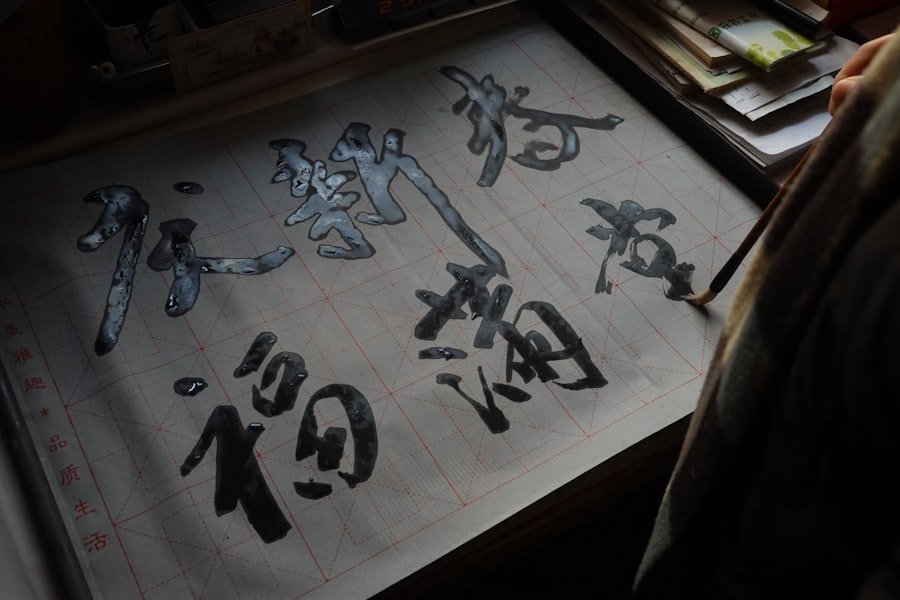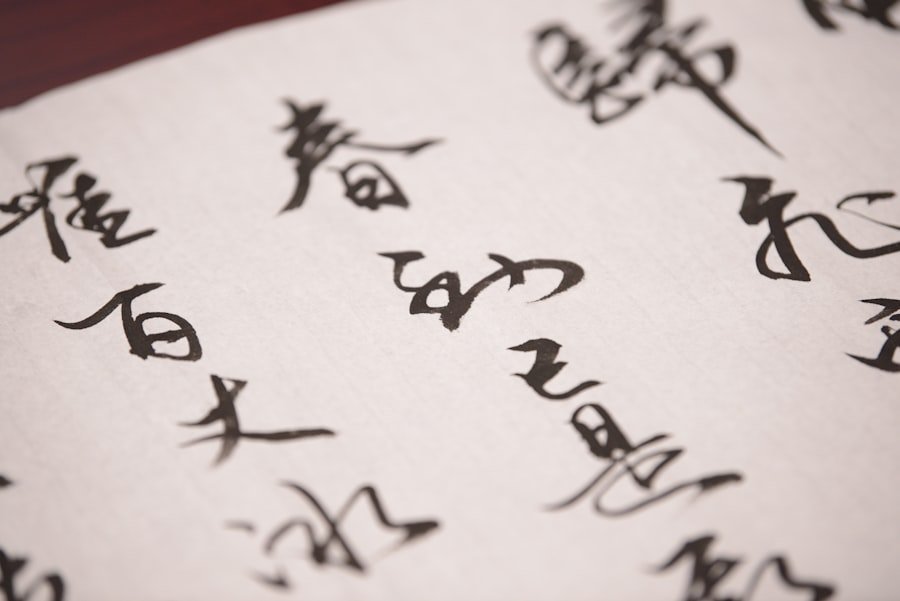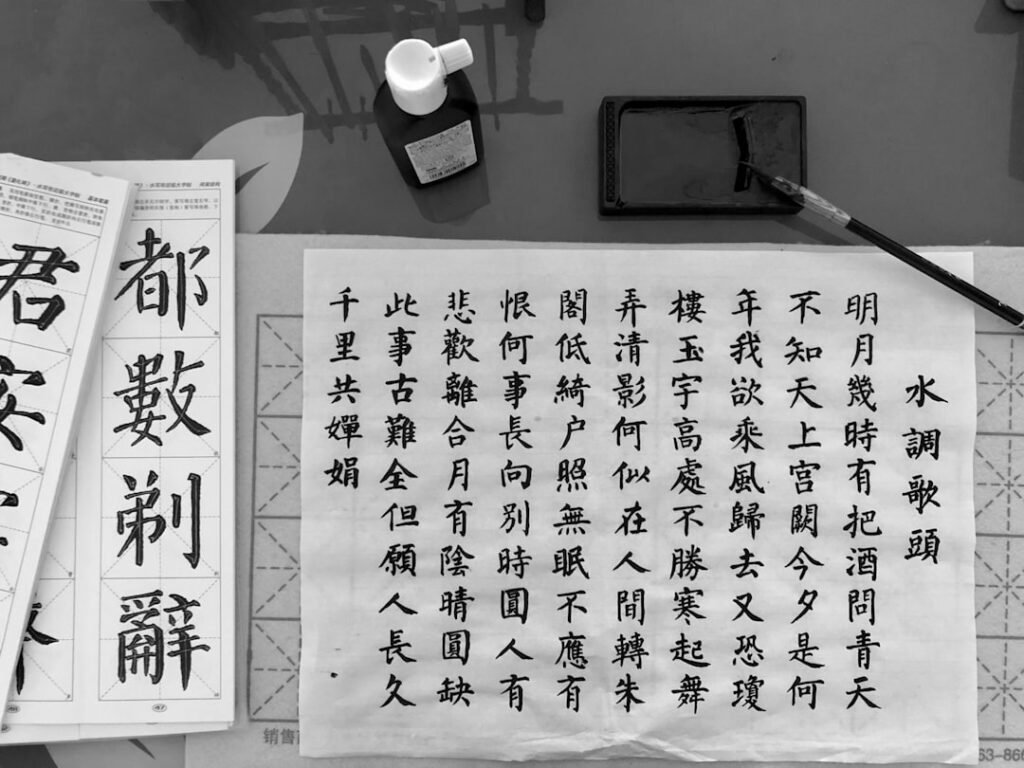Chinese calligraphy, an ancient art form that has flourished for thousands of years, is much more than mere writing; it is a profound expression of culture, philosophy, and aesthetics. This unique practice combines the beauty of visual art with the intricacies of language, allowing practitioners to convey emotions and thoughts through brush strokes. The art of calligraphy is deeply embedded in Chinese history, reflecting the evolution of the language and the society that has nurtured it.
As one delves into this captivating world, they discover not only the technical skills required but also the spiritual and meditative aspects that accompany the practice. The significance of Chinese calligraphy extends beyond its visual appeal. It serves as a bridge connecting generations, preserving traditions while adapting to contemporary influences.
Each stroke tells a story, and every character embodies a rich tapestry of meaning. For those who embark on this journey, calligraphy becomes a means of self-expression, a way to connect with the past, and an opportunity to engage with a community of like-minded individuals. As we explore the various scripts and styles within this art form, we will uncover the nuances that make Chinese calligraphy a cherished pursuit for many. Master the art of Chinese calligraphy. Enroll now at the LC Chinese School in Oslo.
Table of Contents
ToggleSummary
- Chinese calligraphy is a traditional art form that has been practiced for thousands of years.
- There are several different calligraphy scripts, each with its own unique characteristics and history.
- Choosing the right script is important as it can convey different meanings and emotions.
- The Standard Script (楷書) is a simplified and widely used script, known for its clear and elegant appearance.
- Beginners should consider factors such as stroke order and brush control when learning Chinese calligraphy.
Overview of Different Calligraphy Scripts
Chinese calligraphy encompasses a variety of scripts, each with its own unique characteristics and historical significance. The primary scripts include Standard Script (楷書), Seal Script (篆書), Running Script (草書), and Clerical Script (隸書). Each script reflects different periods in Chinese history and serves distinct purposes, from formal documentation to artistic expression.
Understanding these scripts is essential for anyone looking to appreciate or practice Chinese calligraphy. Standard Script, often regarded as the most accessible form for beginners, is characterised by its clear and legible strokes. Seal Script, on the other hand, is an ancient style that dates back to the Qin Dynasty and is often used for seals and stamps.
Running Script offers a more fluid and dynamic approach, allowing for greater expression and creativity. Finally, Clerical Script combines elements of both Standard and Running Scripts, making it a versatile choice for various applications. By exploring these different scripts, one can gain insight into the evolution of Chinese writing and the artistic possibilities that each style presents.
The Importance of Choosing the Right Script

Selecting the appropriate script is crucial for anyone embarking on their calligraphy journey. Each script not only has its own aesthetic qualities but also conveys different emotions and messages. For instance, Standard Script is often used in formal settings due to its clarity and precision, making it ideal for official documents or educational purposes.
In contrast, Running Script allows for more personal expression, making it suitable for artistic works or personal letters. Moreover, the choice of script can significantly impact the learning experience. Beginners may find Standard Script more approachable as it provides a solid foundation in stroke order and character structure.
As one gains confidence and skill, they may wish to explore other scripts that resonate with their artistic vision or personal style. Ultimately, understanding the significance of each script will enable practitioners to make informed choices that align with their goals in calligraphy.
The Simplified Script: Standard Script (楷書)
Standard Script (楷書) is often considered the cornerstone of Chinese calligraphy. Its origins can be traced back to the Han Dynasty, where it emerged as a response to the need for a more legible form of writing. Characterised by its balanced proportions and clear strokes, Standard Script is widely taught in schools and used in everyday writing.
This script serves as an excellent starting point for beginners due to its straightforward structure and emphasis on proper stroke order. Practising Standard Script allows students to develop essential skills such as control over brush movements and an understanding of character composition. The clarity of this script makes it particularly appealing for those who wish to create formal pieces or engage in educational pursuits.
As students become proficient in Standard Script, they gain the confidence needed to explore more complex styles, paving the way for a deeper appreciation of the art form.
The Traditional Script: Seal Script (篆書)
Seal Script (篆書) represents one of the oldest forms of Chinese calligraphy, with roots dating back over two millennia. This script is characterised by its intricate and stylised characters, often resembling small works of art in their own right. Seal Script was primarily used for official seals and inscriptions, making it an important part of Chinese history and culture.
Its unique aesthetic qualities have made it a popular choice among artists and collectors alike. While Seal Script may present challenges for beginners due to its complexity, it offers a rewarding experience for those willing to invest time in mastering its nuances. The fluidity and elegance of Seal Script allow for creative expression, making it an ideal choice for decorative pieces or personal projects.
As practitioners delve into this traditional script, they not only learn about its historical significance but also develop a deeper connection to the cultural heritage that it represents.
The Artistic Script: Running Script (草書)

Running Script (草書) is often regarded as the most artistic form of Chinese calligraphy, characterised by its fluidity and spontaneity. This script allows for greater freedom in brush strokes, enabling calligraphers to express their emotions and creativity more freely than in other styles. Running Script emerged during the Han Dynasty as a way to facilitate faster writing while maintaining an artistic flair.
For those who appreciate the beauty of movement in calligraphy, Running Script offers an exhilarating challenge. The emphasis on speed and fluidity can lead to stunning results when executed with skill and confidence. However, mastering this script requires practice and an understanding of how to balance spontaneity with control.
As practitioners explore Running Script, they discover new dimensions of expression that can elevate their calligraphy to an art form.
The Elegant Script: Clerical Script (隸書)
Clerical Script (隸書) occupies a unique position within the realm of Chinese calligraphy, blending elements from both Standard and Running Scripts. Developed during the Han Dynasty, this script was primarily used for administrative purposes due to its legibility and efficiency. Clerical Script features distinct characteristics such as wider strokes and pronounced curves, giving it an elegant appearance that sets it apart from other styles.
For beginners seeking a balance between formality and artistic expression, Clerical Script presents an excellent option. Its clear structure allows for easier learning while still providing opportunities for creativity. Practising Clerical Script can enhance one’s understanding of stroke techniques and character formation, making it a valuable addition to any calligrapher’s repertoire.
Considerations for Beginners
For those new to Chinese calligraphy, several considerations can enhance the learning experience. First and foremost is the importance of selecting appropriate materials. High-quality brushes, ink, paper, and ink stones are essential tools that can significantly impact one’s ability to produce beautiful work.
Investing in good materials not only improves results but also fosters a deeper appreciation for the craft. Additionally, beginners should approach their practice with patience and an open mind. Mastery of calligraphy takes time; therefore, setting realistic goals is crucial.
Regular practice is key to developing muscle memory and refining techniques. Joining a community or taking classes can also provide valuable support and guidance as one navigates their calligraphy journey.
Resources for Learning Chinese Calligraphy
A wealth of resources exists for those eager to learn Chinese calligraphy. Books on techniques, history, and styles can provide valuable insights into the art form’s intricacies. Online tutorials and videos offer visual demonstrations that can aid in understanding stroke order and brush techniques.
Furthermore, engaging with local calligraphy clubs or workshops can foster connections with experienced practitioners who can offer mentorship. In Oslo, the LC Chinese School stands out as an exceptional resource for those interested in exploring Chinese calligraphy further. With dedicated courses designed to cater to various skill levels, students can immerse themselves in this beautiful art form while receiving expert guidance from experienced instructors.
Tips for Practicing Calligraphy
To make the most of your calligraphy practice, consider implementing several effective strategies. First, establish a consistent routine that allows you to dedicate time each week to honing your skills. This regularity will help reinforce techniques and build confidence over time.
Additionally, focus on mastering individual strokes before attempting full characters or phrases. Breaking down complex characters into manageable components can simplify the learning process and lead to more satisfying results. Lastly, don’t hesitate to experiment with different scripts and styles; this exploration can lead to unexpected discoveries about your artistic preferences.
Making the Choice
As one embarks on their journey into Chinese calligraphy, the choices made along the way will shape their experience profoundly. From selecting the right script to finding suitable resources for learning, each decision contributes to personal growth within this captivating art form. Whether drawn to the elegance of Standard Script or the expressive nature of Running Script, practitioners will find joy in exploring their creativity through brush strokes.
For those in Oslo seeking guidance on this artistic path, LC Chinese School offers an enriching environment where students can learn from skilled instructors while connecting with fellow enthusiasts. With dedicated courses tailored to various levels of expertise, aspiring calligraphers can cultivate their skills in a supportive community setting. Ultimately, Chinese calligraphy is not merely about mastering techniques; it is about embracing a cultural heritage that transcends time and space.
As individuals engage with this art form, they discover not only their own artistic voice but also a deeper connection to a rich tradition that continues to inspire generations around the world.
Master the art of Chinese calligraphy. Enroll now at the LC Chinese School in Oslo.







